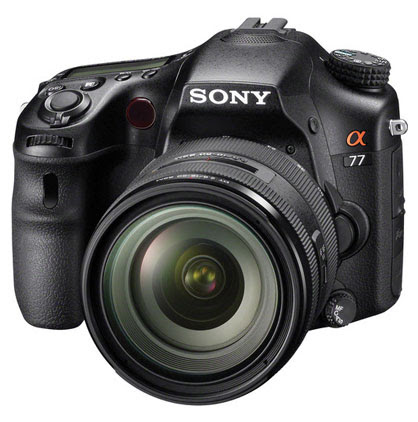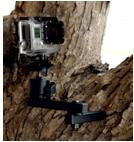Filming Your Own Hunts
What to Look for and What to Buy
With the rise of things like Youtube and Vimeo, thousands of people have started filming, producing, and uploading their hunting videos to the Internet for others to see. This has inspired thousands more to get on board and start filming and sharing their hunts as well. Common questions I often get from newcomers to the world of videoing hunts typically sound as follows. What kind of equipment do I need? What do I look for in a video camera? How do I get started filming my hunts? And so on. This article seeks to answer a few of those types of questions. However, I will start by saying that the various options and types of equipment that can be used to capture a hunt on video is ever growing and changing. Since this is a short, introductory article, I will just focus on the main types of equipment that have been most commonly used in the past and are still used by the majority of people in the present.
First of all, I think everybody knows you should buy a camera that can record in full HD 1080p as opposed to one that just records in standard definition. However, one of the most important aspects to look for in a camera that most newcomers to the world of videography are not familiar with is the sensor size. Sensor size is generally indicated in fractions of an inch. My personal preference would be to use a camera that has at least one third of an inch sensor size, usually written as 1/3 in the specifications section for the video camera. In my opinion, the sensor size is so important that I would rather have a larger sensor with less optical zooming abilities (such as 1/3 sensor with 10X optical zoom), than a small sensor with larger levels of optical zoom (such as 1/5 sensor with 50X optical zoom). Why, you may ask? The reason is because a larger sensor will provide a better picture, especially in low light situations. This is a crucial point for us as hunters, because many of our peak opportunities for a trophy animal will occur in early morning and late evening.
Since I am talking about the sensor, I want to address people who aspire to have their own hunting show on television. In general, most television networks want at least 70% of your footage to be filmed with a camera that has at least three sensors in it. This means that consumer rated camcorders will not suffice. A great entry level camera for those aspiring to TV production quality would be something like
the Sony HXR-NX5U or Sony HDR-AX2000 (pictured here). These cameras also have manual zoom, manual focus, and a manual iris ring, which can really assist in the professional look of your video footage. However, please know that it can take some work and practice getting used to these manual features. Therefore, I strongly recommend getting a camera like this well in advance before the hunting season so that you can spend time practicing and getting used to the manual features. You don’t want to spend all that money on a camera and then still have poor video production because the animal was not in focus at the time of the shot.
Campbell Cameras has package deals that provide all of the accessories you will need with these Sony type cameras, such as a shotgun mic, long-lasting battery, SD card, tree arm, UV filter, backpack to carry all of your equipment in, etc. A package like the one I am referring to typically includes a couple of my personal favorite accessories such as the MUDDY camera arm and Manfrotto fluid head (pictured below). The combination of these two accessories provides incredible stability and smooth panning for a high quality looking video.
Now that I have addressed what you may want to use if you aspire to produce television network
quality video, allow me to address individuals who just want to film their hunts for Youtube or friends and family. One of the most important features to look for in a camera is that it will accept an external remote such as the one pictured here. With a remote, your hand never leaves the handle of the panning arm and you can zoom in and out nice and smoothly without creating any unnecessary shaky footage. This single feature is far more helpful and important than most newcomers to the industry realize, especially for those who plan to film themselves like I do. Take it from me, if you are filming yourself and don’t have a remote, you constantly have to reach up to zoom and then reach back down to pan the camera. This causes a tremendous amount of shaking and choppiness in your footage. Even if you are filming someone else, you are still more likely to cause shaky footage if you are zooming with one hand and panning with the other, so please don’t overlook the helpfulness of having a remote!
When it comes to a top brand like Canon, the least expensive model that is currently available in their consumer grade lineup that is able to have an external remote plugged into it is the Canon Vixia HF G20 (pictured here). In my opinion, this is a pretty sweet camera! It also does well in low light compared to some other brands because of its 1/3 inch sensor.
The last thing I would suggest adding to your arsenal of video equipment is at least one POV camera. POV stands for Point of View. They generally do not zoom in or out, and they typically capture footage in a wide angle view. The key things to look for in a POV camera are that it can record in HD 1080p, has image stabilization, descent low light image quality, good record time, rechargeable battery(s), wireless remote control to start and stop recordings, and a monitor or blue tooth connectivity which enables you to connect it with your smart phone. This last feature is especially helpful so that you can see what you are videoing if the camera is mounted on your hat or at a distance in a tree near you.
Some nice things about POV cameras are that they are light, compact, and provide additional camera
angles. Whether you are by yourself or hunting in a team, you can easily set up a POV camera on the tree next to you in order to video yourself make the shot. This enables the viewer to see you in action, which a lot of people like. In fact, with products such as the GoPro Hero 3 (pictured here), you can set up a bunch of POV cameras all around you and turn all of them on at the same time with one single remote. In the past, you had to move all around trying get all of your cameras turned on as the animal approached. This created a tremendous amount of motion, and you risked scaring away the game animal.
At any rate, I sincerely hope that this short, introductory article has helped to give you a few ideas regarding what to look for and what to buy as you get started filming hunts. If you have any more technical questions, I’ll refer you to the staff at Campbell Cameras. They know what they are talking about and have always been extremely helpful with the people I know who have called or emailed them with questions. Lastly, I wish you the best of luck as you get out there and start filming your own hunts! I hope you will even start filming this year, so that you can watch, share, and “Relive Your Adventure” for many years to come! May God bless you throughout the journey!




































